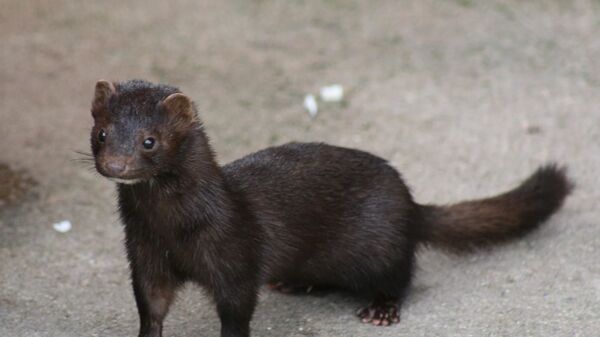No new mink pups will be born on Swedish mink farms this year, Swedish Agriculture Minister Jennie Nilsson has announced, citing a stop in mink breeding due the risk of spreading coronavirus.
“No new puppies are allowed in 2021,” Jennie Nilsson said in a statement, citing advice from the Swedish Public Health Agency, the Swedish Board of Agriculture and the Swedish Veterinary Institute (SVA).
The Swedish Veterinary Institute (SVA) has assessed the risk of new outbreaks based on the development in other countries and what is known about the dynamics of the infection, its director general Ann Lindberg said. The conclusion is that the spread of infection cannot be prevented with sufficient certainty.
“As long as we are having this societal spread, this risk will remain”, Ann Lindberg said.
“Now we are facing a new situation when the mink industry is approaching mating season,” Swedish Board of Agriculture Director-General Christina Nordin chimed in with a warning.
Farmers can therefore keep their breeding animals in order to resume operations in 2022, but if any pups are born accidentally they will need to be put down, the Swedish Board of Agriculture said in a statement.
However, unlike neighbouring Denmark, which ordered a blanket cull of its entire 15-million-strong population of farmed mink, Sweden decided to spare the existing animals. Mink breeders have been promised a compensation for their lost income.
Still, animal husbandry will be thoroughly examined by the Swedish Board of Agriculture and the Swedish Veterinary Institute in order to reduce the risk of infection, Financial Markets Minister Per Bolund announced. The authorities will also be tasked with working out further measures to minimise the risk of transmission of infection between animals and humans. The assignment must be completed no later than February 2022.
“Our mink industry continues to be a risk factor to be taken into account in the fight against the coronavirus,” Bolund said, as quoted by national broadcaster SVT.
In the autumn of 2020, the coronavirus spread to 13 mink farms on Listerlandet Peninsula in Blekinge County, which is Sweden's most mink-dense area. Since the outbreak coincided with the season when most minks are killed for fur anyway, the authorities let the process run its due course. Ultimately, 80 percent of the mink were killed, but the breeding animals were allowed to live on.
“We haven't seen the Danish mutation of the virus in Sweden”, the Swedish Board of Agriculture's chief veterinarian Håkan Henrikson said, justifying the Swedish course of action.
Denmark, on the other hand, saw a new mutation of coronavirus spread among mink and humans alike, and there was a dire concern that the mutated variant would be resistant to vaccines, rendering the painful mass inoculation useless.
Following the controversial decision by the Danish government, later found unconstitutional, but still upheld by the parliamentary majority, macabre scenes took place across the Scandinavian country, as million of mink carcasses were shovelled into mass graves. Some of them turned out to be too shallow, and the bloated corpses of what the press dubbed “zombie mink” emerged from the ground. The authorities subsequently decided to excavate and incinerate some of the carcasses for safety reasons, as well as to avoid the poisoning of ground waters.
Since about 1,000 Danish breeders lost their livelihoods, the Danish government recently reached a landmark political agreement on an unparallelled financial compensation to the maximum tune of DKK 18.8 billion ($3 billion).
Before the cull, Denmark controlled 29 percent of the market, with 24.5 million produced mink skins fetching DKK 5.2 billion (about $800 million) in 2019.
Sweden, by contrast, is a more humble player, with about 35 farms around the country, producing some 450,000 mink skins each year. Over the past decades, the number of mink farms has fallen sharply, not least due to pressure from animal rights activists.




